Prototype versions of board games are getting super expensive, but some are so intriguing that I have to try them out via Tabletop Simulator. The game is Solar 175 from Cogito Ergo Meeple, a euro style legacy game with a sci-fi theme that plays 1-5 players. It’s similar to Orleans and El Grande, some very classic euro games you’ve probably heard of or even played, using bag building, area control and worker placement. The twist is it adds some new legacy type elements to keep the universe ever evolving.
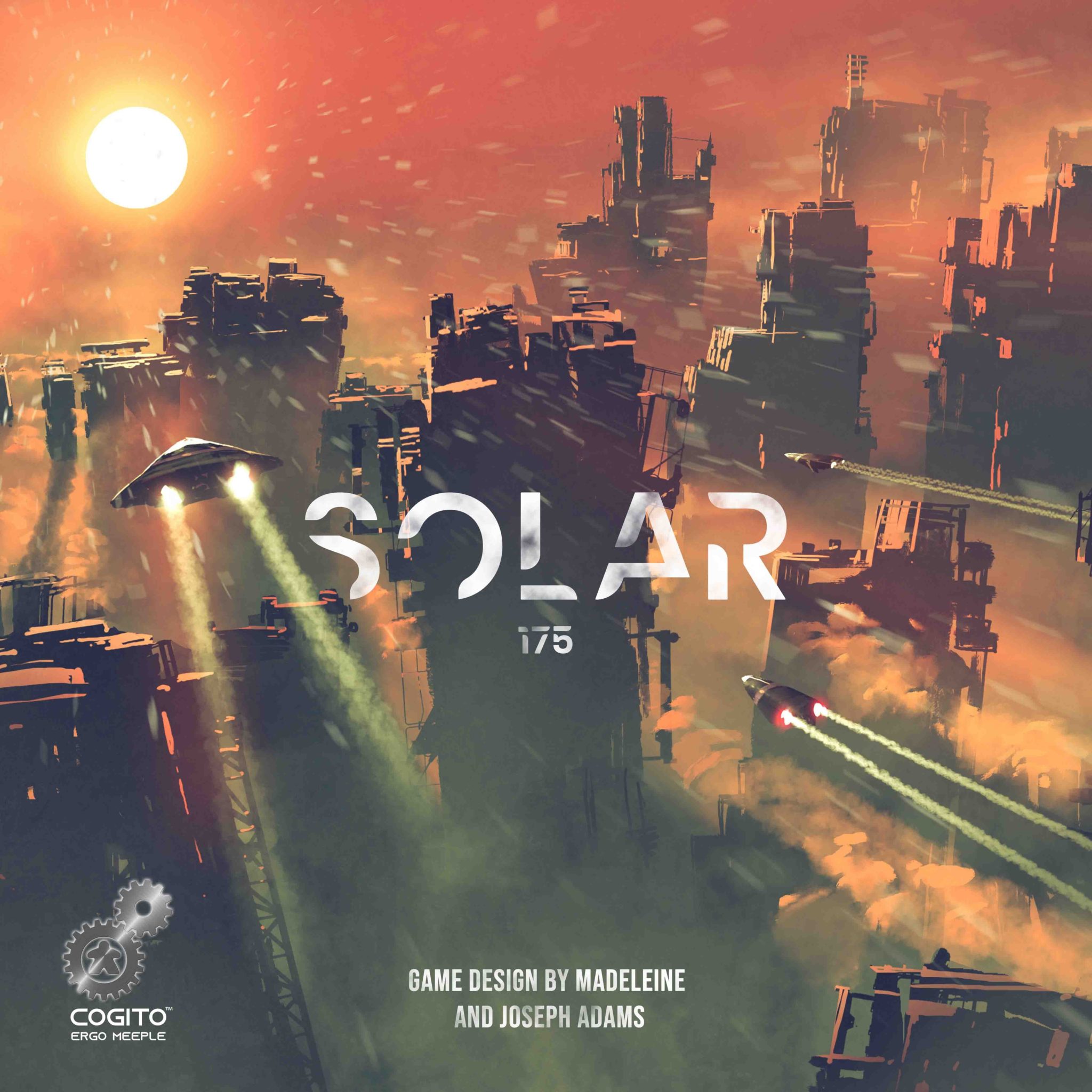
What’s In The Box?
- 1 Giant box
- 1 triple layer custom plastic insert
- 1 Legacy rulebook
- 95 NIVEN outpost tokens
- 100 screen printed worker tokens
- 46 mining resource tokens
- 30 military tokens
- 25 megastructure funding tokens
- 20 Hensler biodomes
- 10 credit cubes
- 34 voting tokens
- 5 unique double layer indented player boards
- 5 DC-XERXES 8050
- 1 WS VANGUARD CLASS II
- 1 NAUTILUS EV-280
- 1 TITANICA ELITE
- 1 THE MANCHESTER
- 1 THE KRAKEN
- 1 UFSS ballot box
- 1 first player mega structure and election tokens
- 1 Dry erase marker
- 5 Drawstring cotton bags
- Unlockable content:
- 4 component boxes
- 20 envelopes
- And a secret amount of stickers wooden tokens square cards and mini cards.
If you really want a better look at the game and what’s in the box you will need to check out their Kickstarter page.
How’s It Play?
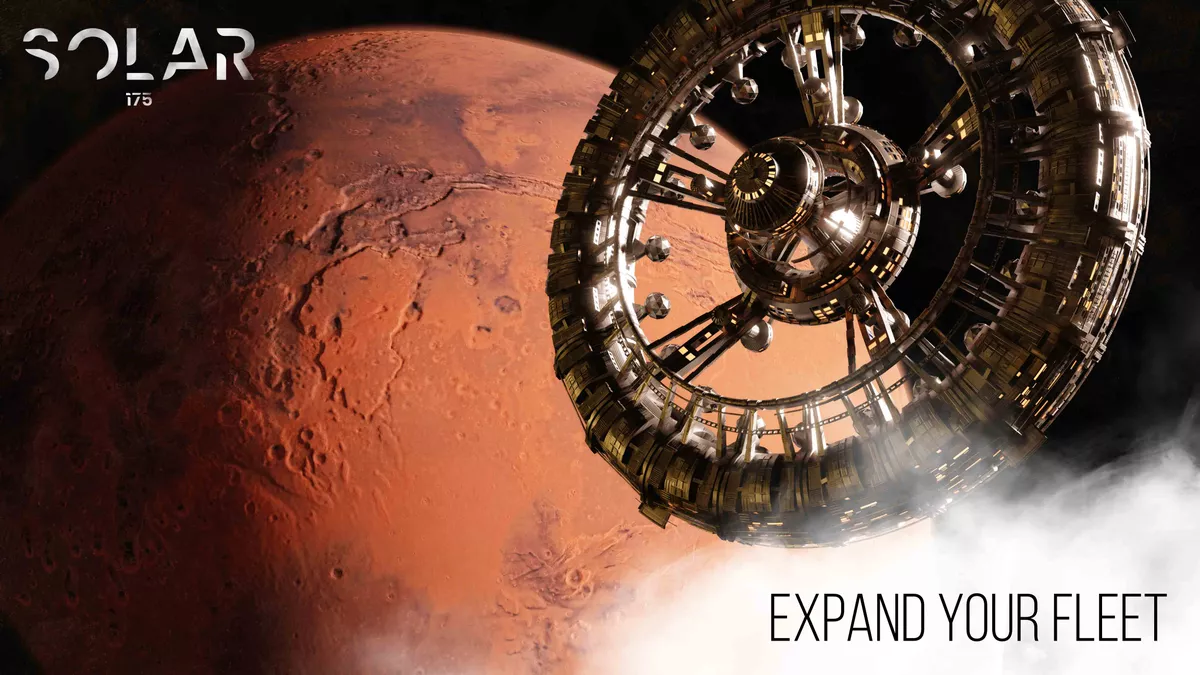
Well its been 175 years since the war, and all control has since been left to one governmental organization: the United Federation of the Solar System. Gradually a new democracy formed and now elections are open to all. Corporations know of the vast wealth available and know they need to gain influence over these political organizations to get what they want. Each player in the game is the CEO of a new company. You start with a small ship and need to hire a team. It’s now up to you expand your company while being tactical and out maneuvering your opponents in this turn of the galaxy.
So in the game points are referred to as influence. You can gain this by influencing the UFSS peacekeeping force, building bases, funding megastructure projects, and increasing your presence in the different zones of the solar system. You will begin the game with a base set of rules which I will cover, but the game is meant to be played as a campaign with the same players each time. As you play through a game you will open up additional rules or unlock cards that are flipped from side A To side B or any other action the game guides you toward. I obviously haven’t played through the campaign myself, so those mysteries are still unknown, but I’m pretty excited to see what surprises come by.
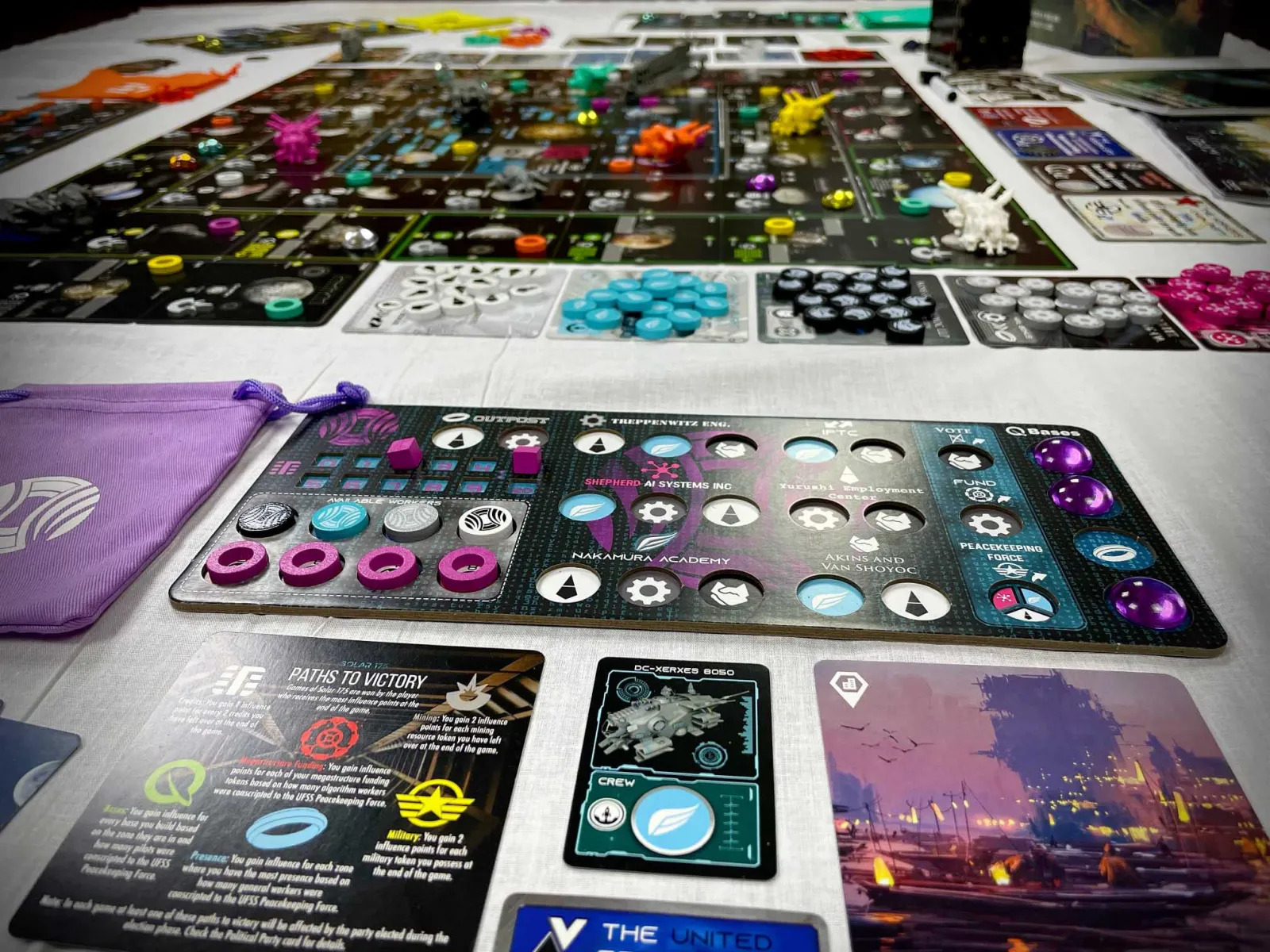
The game is played over rounds that are split into 3 phases which repeat until a player has built 16 of their outpost tokens, this is the trigger for the end of the game which will happen at the end of the round that this happens in.
The first phase is the draw phase. All players will draw workers from their bag equal to the current allowance, in the first turn this will be 4 workers.
The second phase is to assign workers. Everyone will be able to at the same time place their workers onto available actions on their player board or ship card. Any worker not placed will be placed back into their bag. You can also build an outpost by placing one worker back into your bag and then placing one of your outpost tokens near your player board. A maximum of 2 outposts can be built per round using this method.
Now workers can only be placed onto spaces that correspond to their color so some workers can only do certain things while others can do other actions. The one exception to this is the pink algorithm workers who can be placed on any available space. Now you dont always have to place all the required workers required for an action, you can partially fill actions to then be completed in future rounds.
Once all workers are assigned, you will move to the next phase, the action phase which is where you will spend the bulk of your time when playing the game. Starting with the first player and going in clockwise order players will take an action per turn and remove workers from those completed action spaces. Now lets go over the main actions.
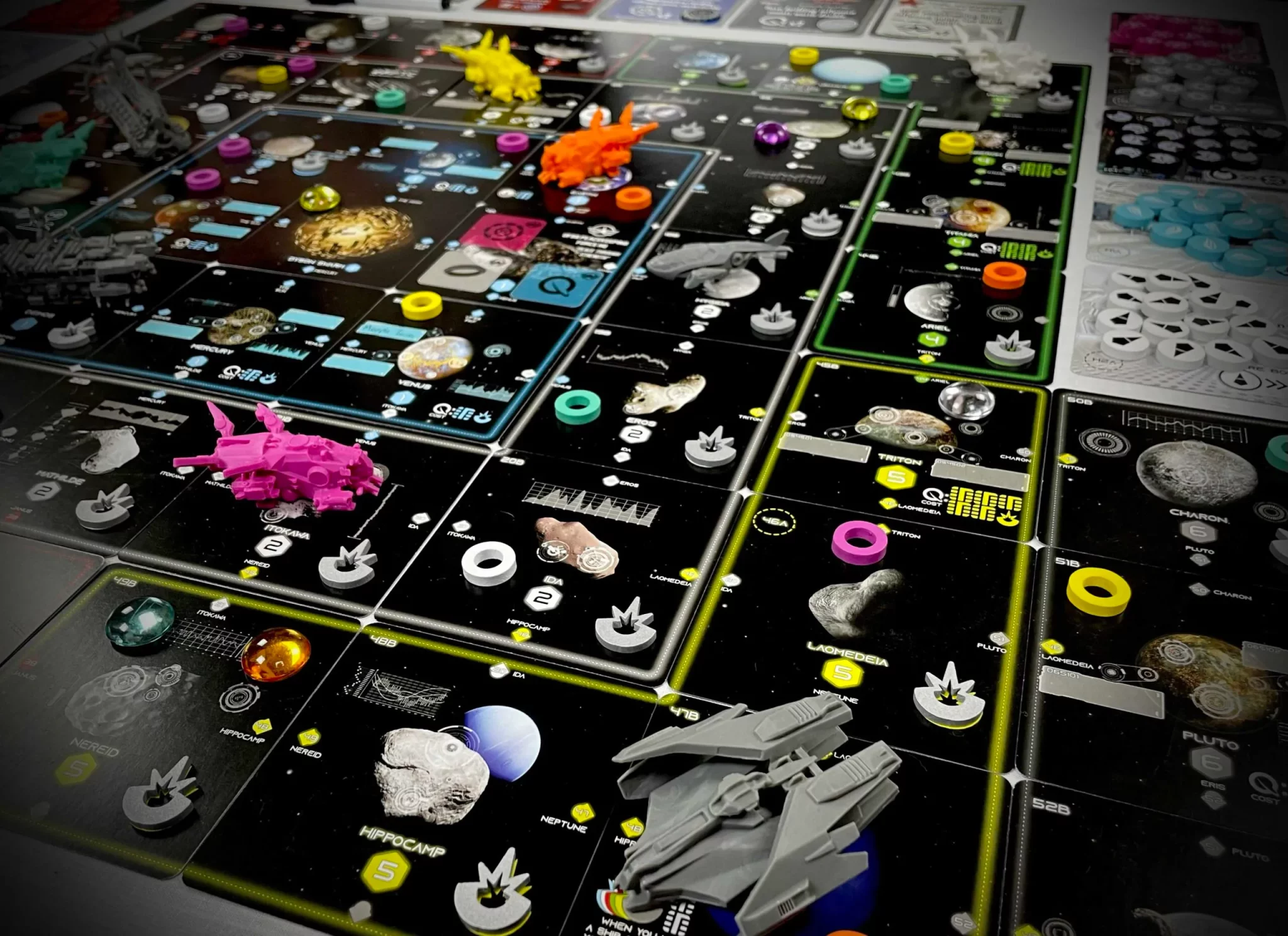
The move action – To move you would place a pilot worker on your ship card. When removing it you can move your ship mini to any location in the solar system. Some locations will give you a benefit for arriving to them. If you move to a place with a mined resource token, you will take one of them, and when arriving to earth, you will immediately collect one credit.
The outpost action – here you will need a general worker and an engineer. This action lets you manipulate your outposts, and build your presence in a different zone using the outpost cards. The first game will have 2 zones but as you play this will change. Anyways there are 2 different outpost cards available, you choose one of the 2, take the listed action and then flip that card to the other side. One card lets you build outposts, which you will place by your player board, and the second card lets you assign outposts by placing ones by your player board onto specific locations. Doing this will increase your presence in that zone its located in.
Increasing your presence in different zones is one of the most important paths to victory, each zone will give influence points to the player with the most presence at the end of the game. Each outpost is worth 1 presence and your bases and ships are worth 2 each.
Ok, now those 2 actions are considered general actions, lets try out the trade actions.This requires a pilot and a lobbyist. When taking them off in the action phase, you can visit one card in the trade row and perform its action.
The Rio Astro Corp will let you either buy or sell mined resources. This would cost 3 credits to buy one token or if you sell, you will add your token to this card and take 3 credits. You will only be able to buy if there are resources on this card.
Credits are currency in the solar system and you will track them on your player board without being able to have more than 29 credits at a time.
When choosing The Bank of Yurushi, you will gain 1 credit.
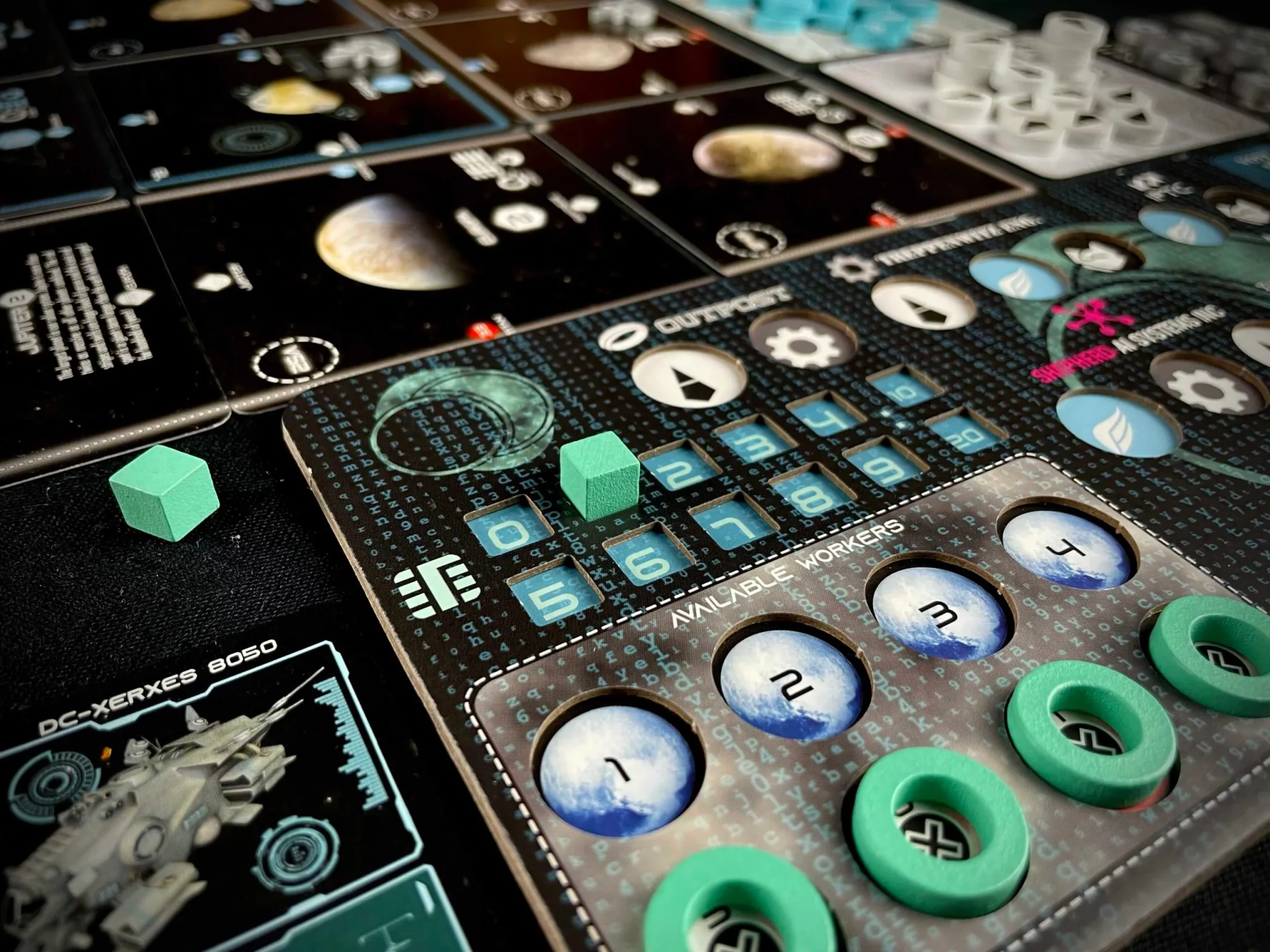
When choosing the Hensler you can build a base in the location where your ship is located, but not all locations will let you build bases. The bottom right corner of a location lists the code to build a base there. In addition you need to have a base available to build. When building you will take the bonus listed underneath the base you built, bases are also worth 1 influence point for every pilot conscripted to the UFSS peacekeeping force HQ and each base is worth 2 presence at the end of the game.
There are some worker removal actions, meaning you place one of your workers onto the right hand side of your place board to permanently remove them from your pool to gain a powerful action, This can not be done with one of your 4 permanent workers that you start the game with. You can send one of your workers to the UFSS peacekeeping force which will earn you military tokens worth 2 influence points at the end of the game and effect how the game is scored.
You can send a worker, an engineer more specifically to fund the megastructure, it will be placed onto the Treppenwitz engineering hire card and then that player takes a megastructure funding token. These tokens are worth points based on the number of general workers in the UFSS peacekeeping force HQ, with each general worker adding 1 influence point to the value of each megastructure funding token. As you can see, the UFSS peacekeeping force really affects scoring in the game. So keep an eye out.
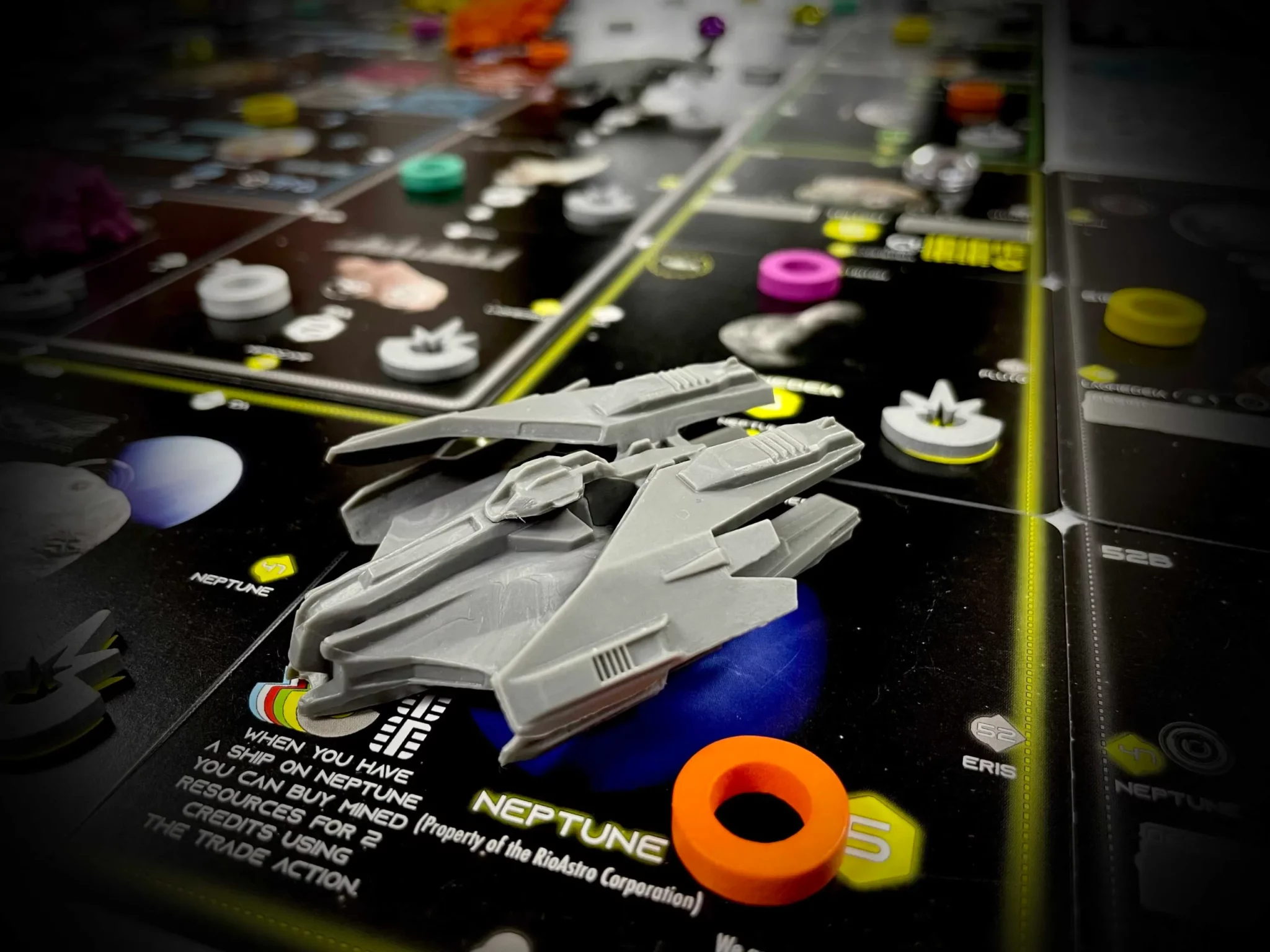
The last worker removal action is a vote. Each token is worth 1 vote, the party with the most votes wins the election at the end of the game which impacts how the game scores. A win for the united federalists will double points gained from the megastructure, a win for the brave new dawn will double points from base building, and a win for the workers union party will double influence points gained from military tokens.
The last set of actions are the hiring actions. This is how you gain more workers for future rounds, many of these actions have a double benefit, but you will take these workers from their hiring cards and place them onto your city leave card. To get a general worker you will need to place an engineer and lobbyist on its spot, and you gain a general worker and then get to take the trade action.
The algorithm requires a pilot, a engineer, and a general worker, and there is no additional hiring bonus with this hire but the algorithm again can be used like a wild, they can fill in spots needed for a pilot, an engineer, a lobbyist, or a general worker.
Players will score the game at the end, with every two credits worth one influence, mined resource tokens worth two influence. Bases are scored, megastructure funding is scored, UFSS peacekeeping force is scored, and each player with the most presence in each zone will gain influence, with the payer who has the most presence in the zone that contains the megastructure gaining an additional five influence.
The player with the most influence wins the game.

The Verdict
This game isn’t doing much that’s new. It packs a lot into the box, but it almost has to because it’s a legacy game. It’s a space game, it carries good mechanics with it, and there obviously needs to be a difference from the first time you play the game to the current time you play the game.
Solar 175 is a game where you need to develop a plan, because as time goes you will need to progress by expanding their influence. You’ll be pulling your tokens out of a bag and you will do actions according to whatever tokens that you pulled out and assign them to their areas. Each time you play the game something new gets added to the game so the game doesn’t get old and boring. You can expect that there’s going to be a change of some sort and you hope that it follows your own strategy or you need to change your strategy.
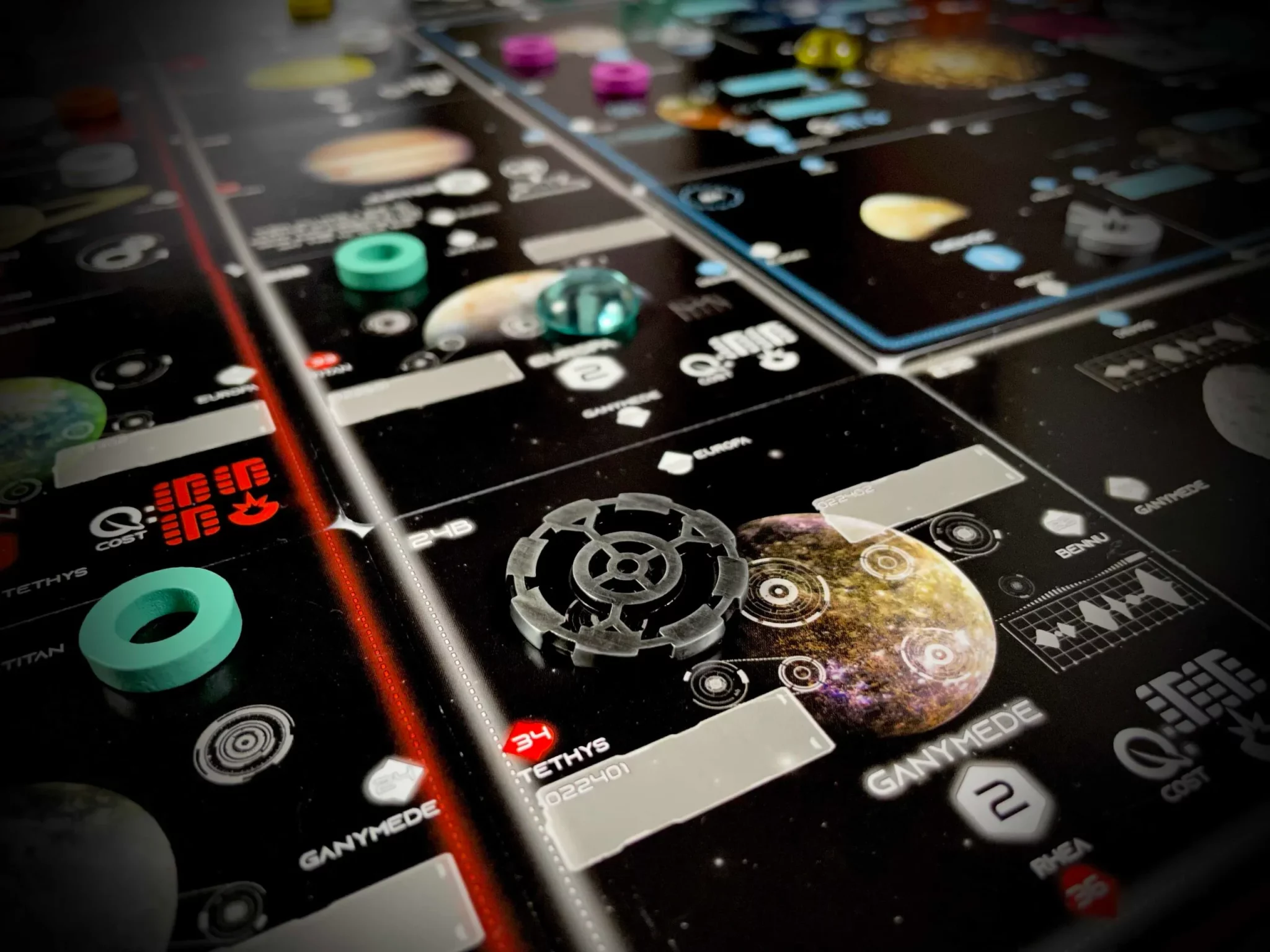
The complexity of the game is lower at the beginning of the game but as the game adds all that new continent and as you unlock stuff the complexity of the game will go up. This is natural and how it feels but it also is a way for you to grasp the mechanics of the game so that you can flow and progress with the game instead of being thrown to the wolves at the very beginning. And as the game progresses you will unlock new things that are surprises hidden in boxes and new components that really makes you excited to play the game again and again. In this legacy game you won’t be ripping anything up but you will just unlock additional contents that will combine with what you’re doing already, and it all will make sense.
There is a type of government type feel to this game where players are going to be voting on certain things that will also change the game. You might not want the same thing that someone else wants. Each player will be developing their own type of technology which also will guide them into one a different things compared to other players. But the voting in this game is a really cool mechanic that they added that not many other games have.
Ultimately this is a worker placement game with all these added extra elements to it like the voting to gain different endgame points, the exploration and developing technology will be different from player to player. You will start the game with one ship but you will slowly be able to do a lot more. And this game for me is so good because it teaches you how to play as you play so the first couple scenarios will give you a good base so you shouldn’t be intimidated of this game due to its complexity because it will guide you into it. And ultimately I think you will have a blast playing this game.
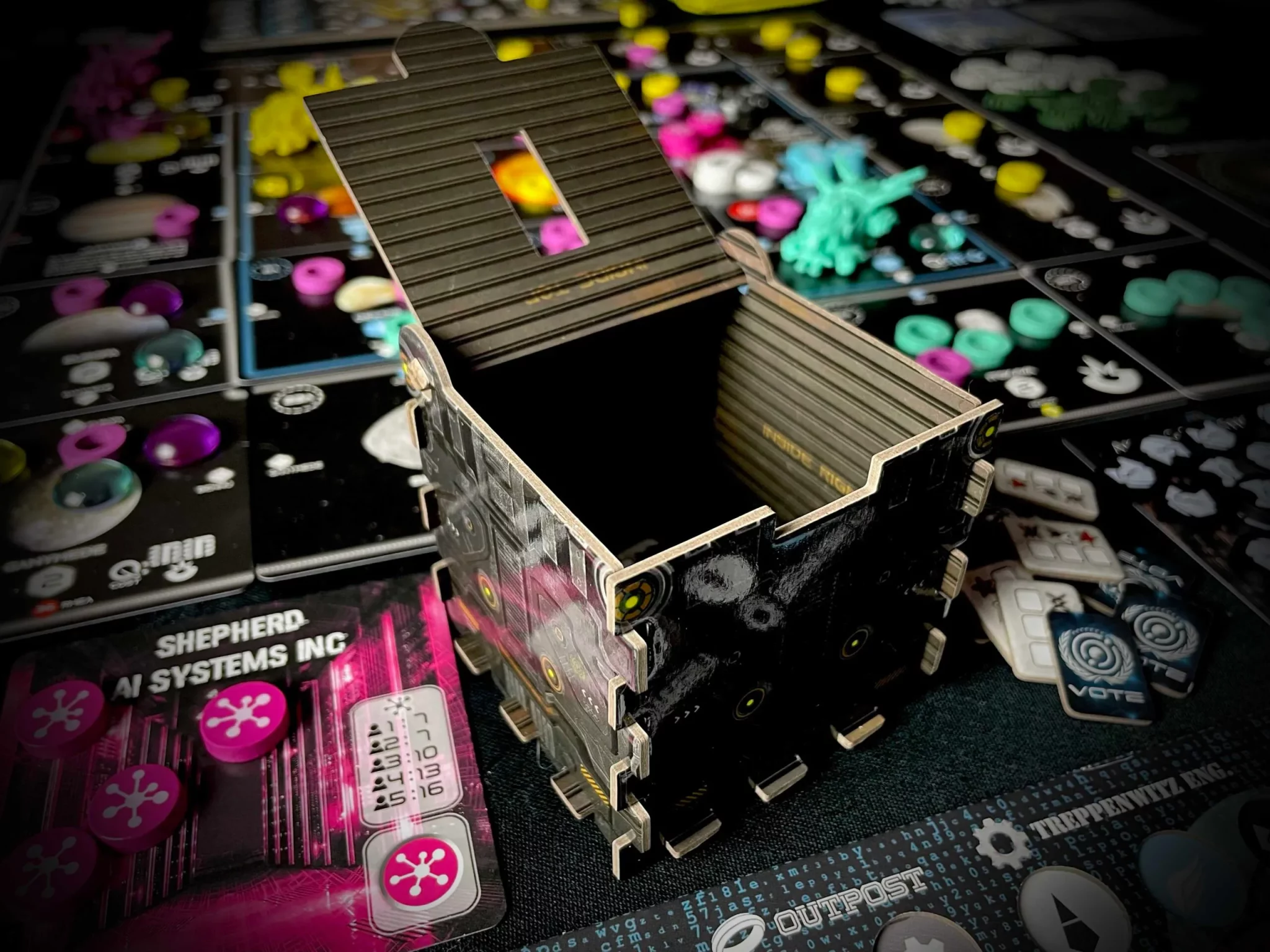
You can grab Solar 175 currently on Kickstarter, with campaign running through March 31st.
Images Courtesy of Cogito Ergo Meeple
Have strong thoughts about this piece you need to share? Or maybe there’s something else on your mind you’re wanting to talk about with fellow Fandomentals? Head on over to our Community server to join in the conversation!

